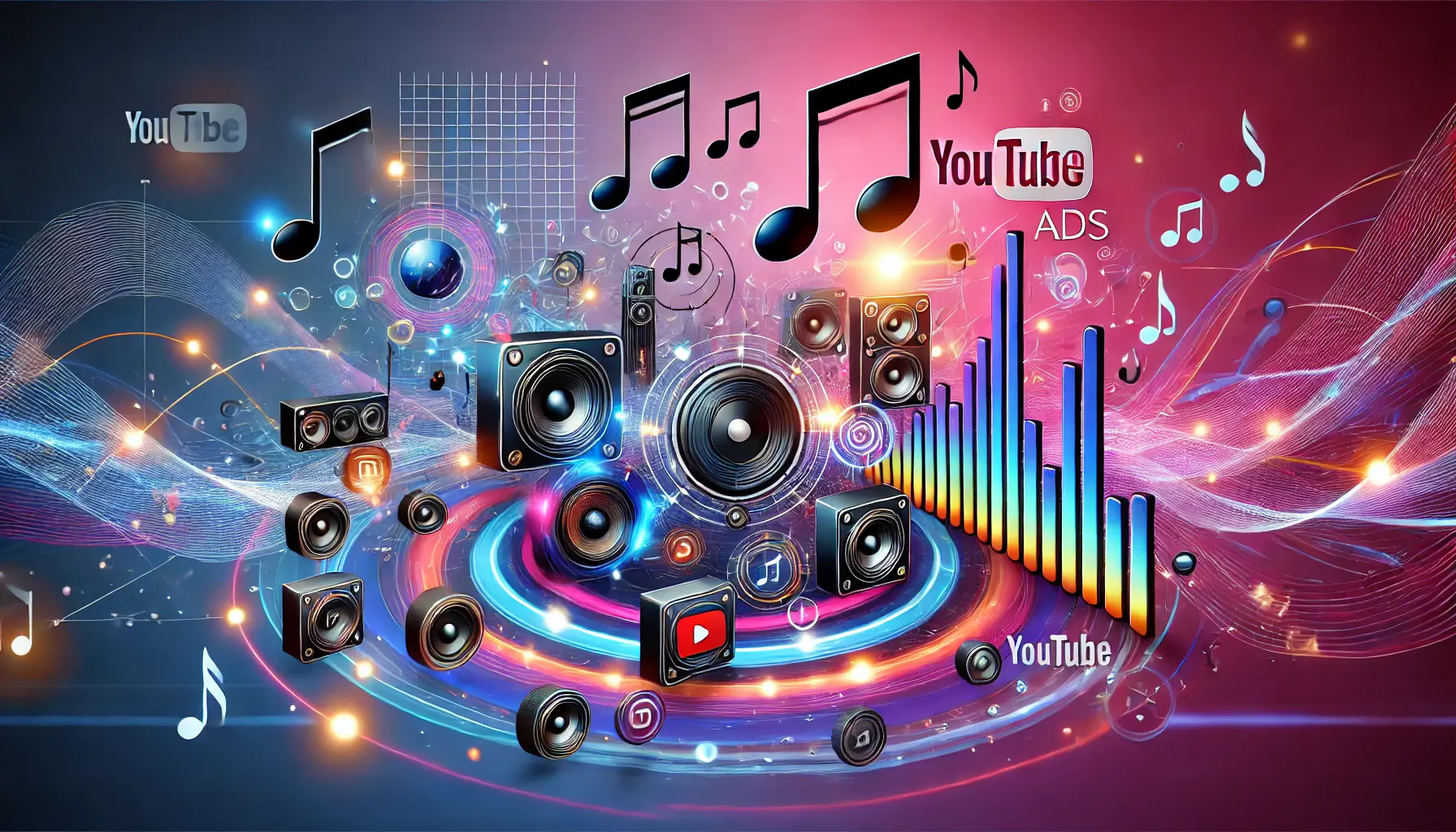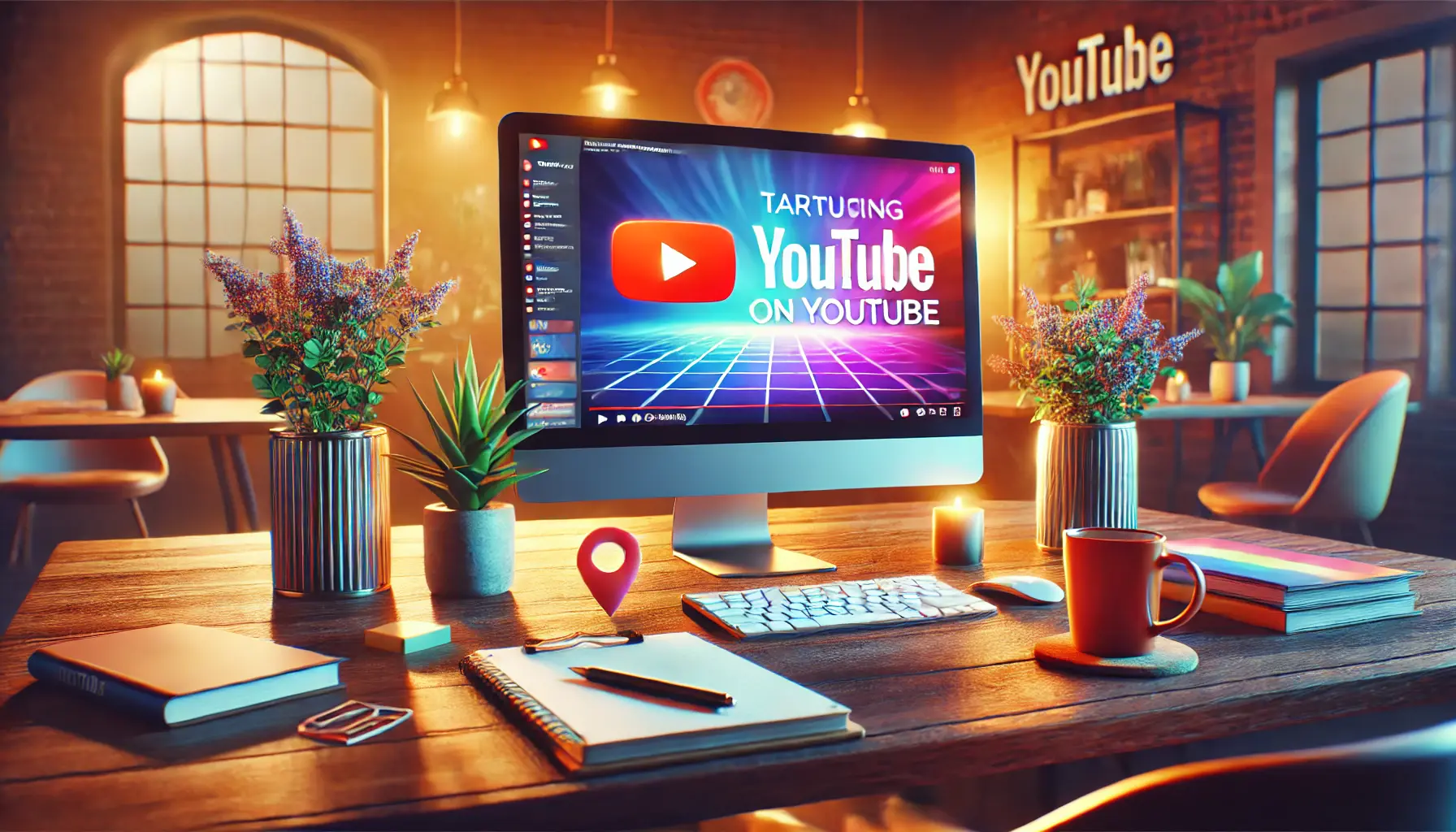YouTube ads are among the strongest tools in the world of digital marketing and have become an agile platform for reaching your audience both visually and with sound.
While visuals are where many focus, on YouTube, music and sound often do the talking.
The right audio grabs attention, stirs emotions, and forms long-lasting brand memories.
How does one construct a resonant audio strategy?
In this article, we’ll explore strategies that ensure your ads hit the right note—literally and figuratively.
- Why Music and Sound Matter in YouTube Ads
- Choosing the Right Music for Your Ad Campaign
- Sound Design Optimization for YouTube Ads
- Creating Emotional Impact with Sound and Music
- Measuring the Success of Music and Sound Strategies
- How to Master Music and Sound Strategies for YouTube Ads
- Common Questions About Music and Sound Strategies
Why Music and Sound Matter in YouTube Ads
Have you ever watched a video ad that gave you chills or stuck in your head long after it ended?
Chances are, the music and sound played a significant role in creating that experience.
Music and sound aren’t just background elements—they’re powerful tools that can transform the effectiveness of your YouTube ads.

An engaging visual representation of how audio elements draw and hold viewer attention in digital ads.
The Role of Audio in Capturing Viewer Attention
In the fast-paced world of YouTube, where users can skip ads in just a few seconds, capturing attention is critical.
Sound is often the first sensory cue that grabs a viewer’s focus.
A compelling opening jingle or impactful sound effect can immediately draw someone in, making them more likely to stay engaged with your content.
- Instant Engagement: Audio cues create an immediate connection, even before the visuals fully register.
- Multi-sensory Experience: Combining audio and visuals enhances the overall impact of your ad.
- Memorability: Catchy sounds or tunes increase the likelihood of your ad being remembered.

A visual representation of the deep emotional connections created by sound and music in digital media.
How Sound Influences Emotional Connection
Music is a universal language that speaks to emotions.
You can take your audience on an emotional journey with a thoughtfully curated soundtrack or even sound effects.
Whether it is excitement, nostalgia, or inspiration, sound can help align the feelings of your audience with your brand message.
- Mood Creation: Upbeat music can energize, while soft tunes can soothe and comfort.
- Storytelling: Adding sound to a narrative makes the story more relatable for an ad.
- Human Connection: Familiar tones or voices can facilitate trust and authenticity.
Music and sound aren’t secondary elements—they are key to the success of a YouTube ad.
In the next section, we will discuss how to choose the right music for your campaign to resonate with your audience.
Stay tuned!
Music and sound are not just background elements; they are critical in capturing attention, evoking emotions, and boosting brand recall in YouTube ads.
- Sound grabs attention instantly.
- Combines audio-visual impact for better engagement.
- Creates lasting memories of your brand.

An artistic depiction of the strategic process of selecting music for effective ad campaigns.
Choosing the Right Music for Your Ad Campaign
Selecting the perfect music for your ad on YouTube can make the difference between an ad that resonates with your audience and one that gets skipped.
Music is not mere background noise; it sets the tone, brings life to your brand’s personality, and stirs emotions.
Here’s how to make the right choice.
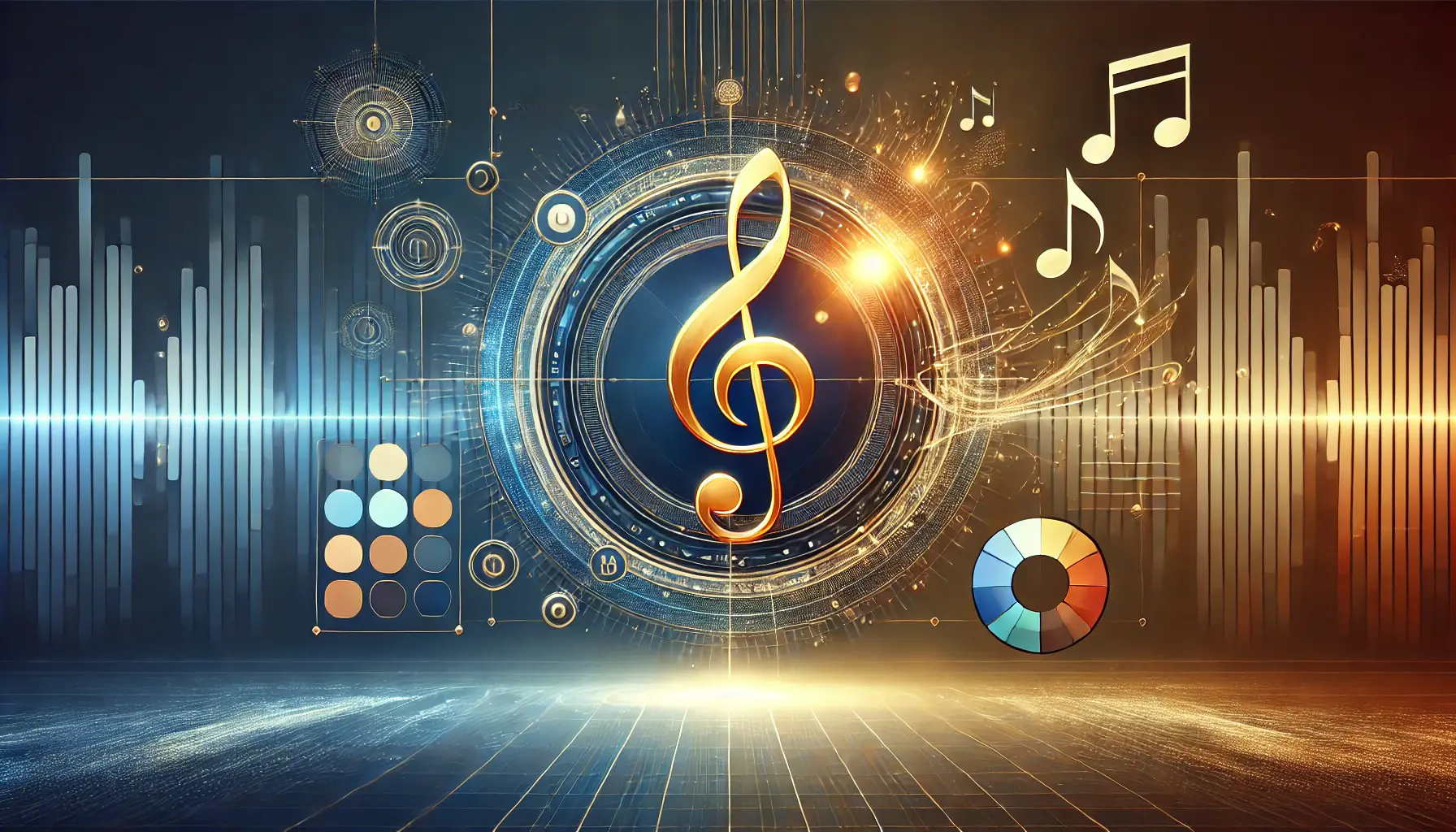
A visual representation of aligning music with brand identity for cohesive and impactful advertising.
Aligning Music with Brand Identity
Your choice of music should reflect your brand’s core values and identity.
For example, if your brand is youthful and energetic, opt for upbeat and modern tracks.
Conversely, a brand that emphasizes sophistication and luxury might benefit from classical or instrumental music.
- Consistency: Ensure the music aligns with your existing branding, including logos, color schemes, and slogans.
- Relevance: Use music that resonates with your target demographic’s preferences and lifestyle.
- Authenticity: Avoid generic tracks; choose music that feels genuine to your brand.

A creative depiction of aligning music with diverse ad objectives for impactful campaigns.
Matching Music to Ad Objectives
The music should serve the purpose of your ad.
Are you looking to inform, entertain, or inspire?
Different objectives require different tones and tempos.
- Inspirational Ads: Use uplifting music to evoke feelings of hope and ambition.
- Humorous Ads: Lighthearted and quirky tunes can enhance comedic elements.
- Educational Ads: Calm and neutral music ensures the message remains the focus.
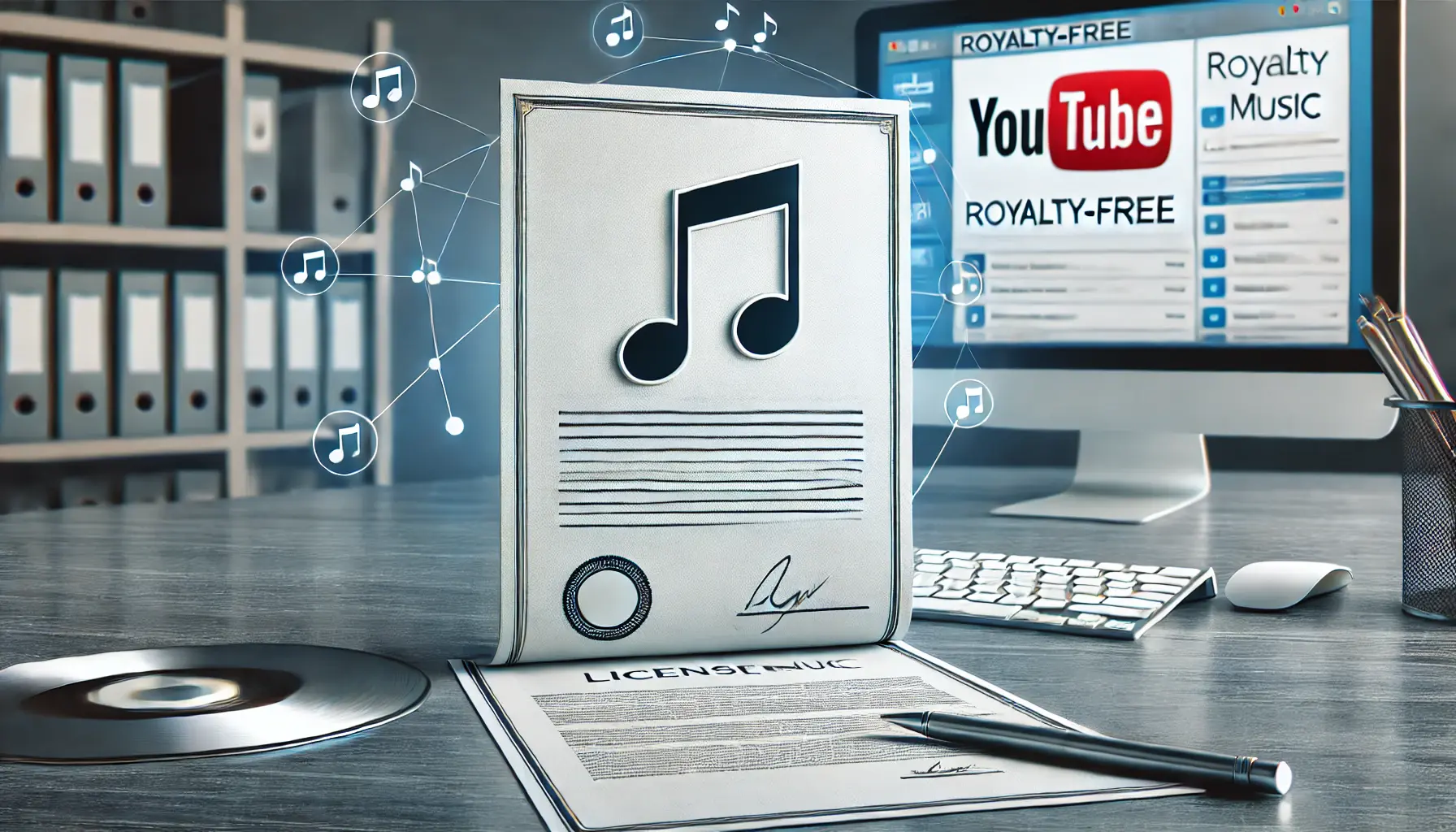
An image symbolizing the licensing process for using music in YouTube ads, emphasizing legality and professionalism.
Licensing Music for YouTube Ads
Using copyrighted music without proper licensing can lead to serious legal issues.
Always ensure you have the rights to use the music in your ad campaigns.
- Royalty-Free Options: Explore platforms like AudioJungle, Epidemic Sound, and PremiumBeat for licensed tracks.
- Custom Compositions: Hire musicians or composers to create unique tracks for your brand.
- Public Domain: Utilize music that is free to use without restrictions.

An image illustrating the process of selecting music from royalty-free music libraries for ad campaigns.
Using Royalty-Free Music Libraries Effectively
Royalty-free music libraries are a cost-effective way to find high-quality tracks for your ads.
These libraries offer a wide range of genres and moods, making it easier to find something fitting your campaign.
- Search by Emotion: Use filters to search for music that delivers the ad’s emotional tone.
- Preview Tracks: Listen to several tracks before selecting the one that works best.
- Customize: Edit the music to fit the length and flow of your ad.
Choosing the right music is both a creative and strategic process.
Through careful selection, your YouTube ad can capture attention, evoke emotion, and leave a lasting impression on your audience.
Next, we’ll look at how to optimize sound design for YouTube ads to take your campaign to the next level.
Selecting music that aligns with your brand identity and objectives can significantly improve your ad’s effectiveness.
- Reflect your brand’s personality through music.
- Use licensed music to avoid legal complications.
- Explore royalty-free options for cost efficiency.
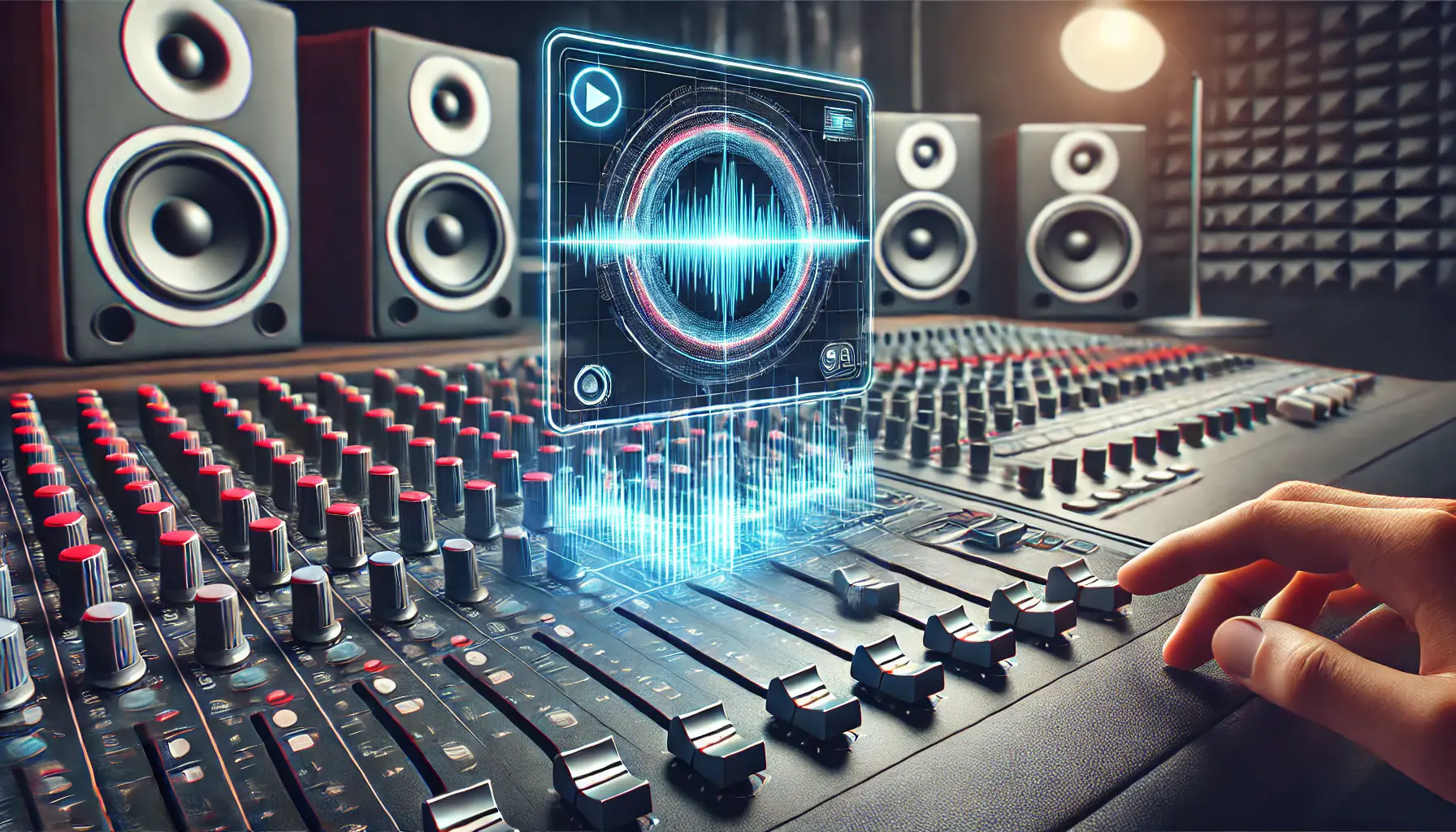
An image depicting the technical aspects of sound design optimization for YouTube ad campaigns.
Sound Design Optimization for YouTube Ads
Sound design is what helps make ads effective on YouTube.
While music provides the tone, the overall sound design should provide clarity and impact to get the message across.
A well-optimized sound design will make your ad more engaging, accessible, and professional.
Here’s how you can fine-tune your sound design for maximum impact.

An image illustrating the balance between background music and voiceovers in sound design for YouTube ads.
Balancing Background Music and Voiceovers
One of the most common mistakes in ad production is allowing background music to overpower the voiceover.
The voiceover is typically the main vehicle for conveying your message, so its clarity should be a priority.
- Volume Control: Keep the background music at a lower volume to ensure the voiceover is clearly audible.
- Frequency Balance: Use equalization to reduce overlapping frequencies between music and voice.
- Testing: Play the ad on different devices to confirm the voiceover remains clear across all platforms.
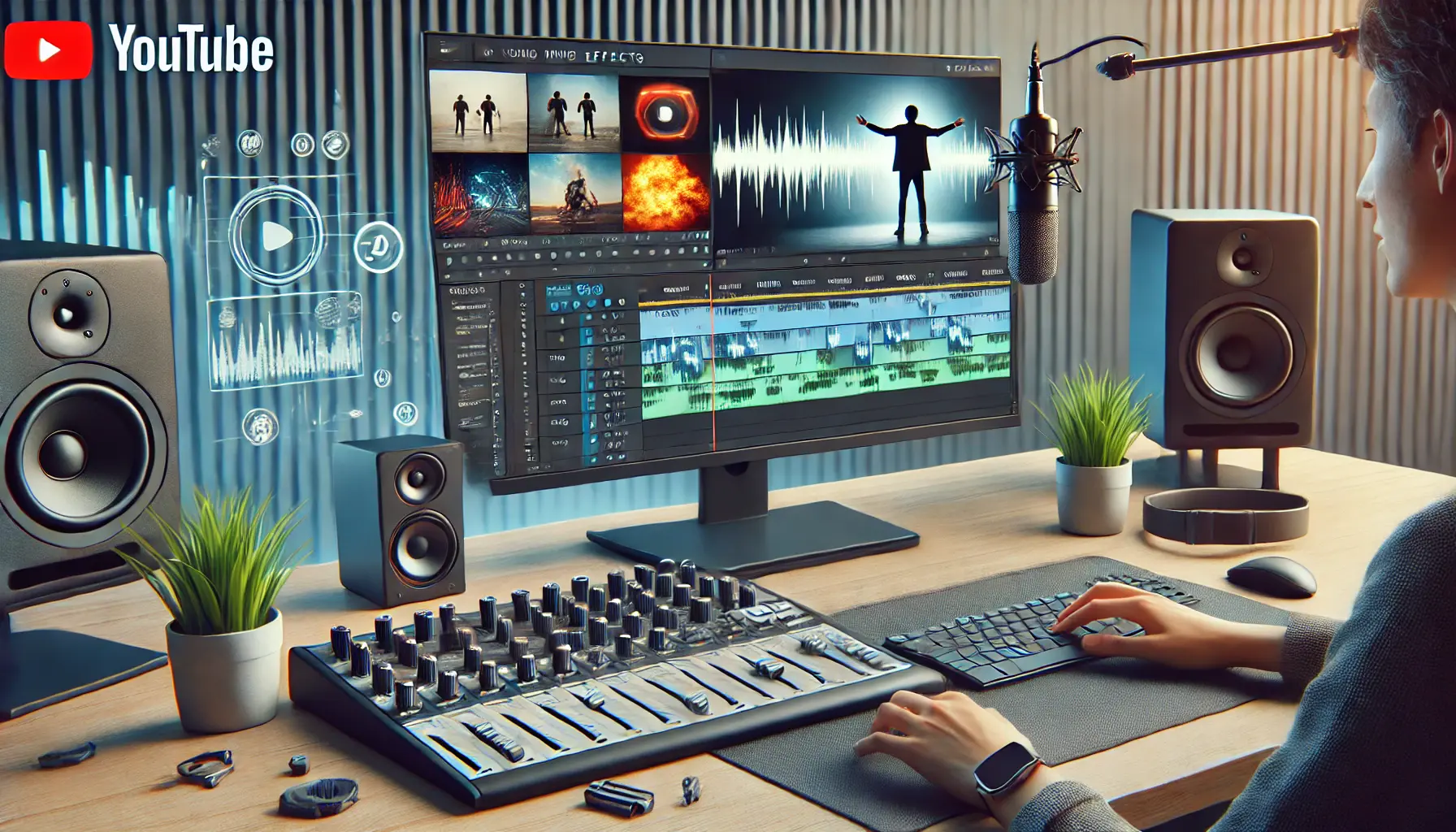
An image illustrating the use of sound effects to enhance storytelling in YouTube ads.
Using Sound Effects to Enhance Storytelling
Sound effects can add depth to your ad and help communicate your story more effectively.
However, they should be used sparingly and intentionally to avoid overwhelming the viewer.
- Highlight Key Actions: Use sound effects to emphasize important moments or transitions in your ad.
- Keep It Subtle: Avoid overly loud or distracting effects that can take away from the message.
- Match the Visuals: Ensure the sound effects are perfectly synchronized with the visuals for a cohesive experience.

An image illustrating the process of adapting audio for mobile, tablet, and desktop devices in YouTube ads.
Adapting Audio for Different Devices
YouTube ads are consumed on a variety of devices, from smartphones to desktop computers.
Optimizing your audio for different playback scenarios ensures your ad sounds great no matter where it’s viewed.
- Mobile Optimization: Ensure your audio is clear even on smaller speakers with limited bass response.
- Headphone Users: Avoid overly sharp sounds that might be uncomfortable for users wearing headphones.
- Stereo and Mono Compatibility: Test your ad in both stereo and mono modes to ensure consistent quality.
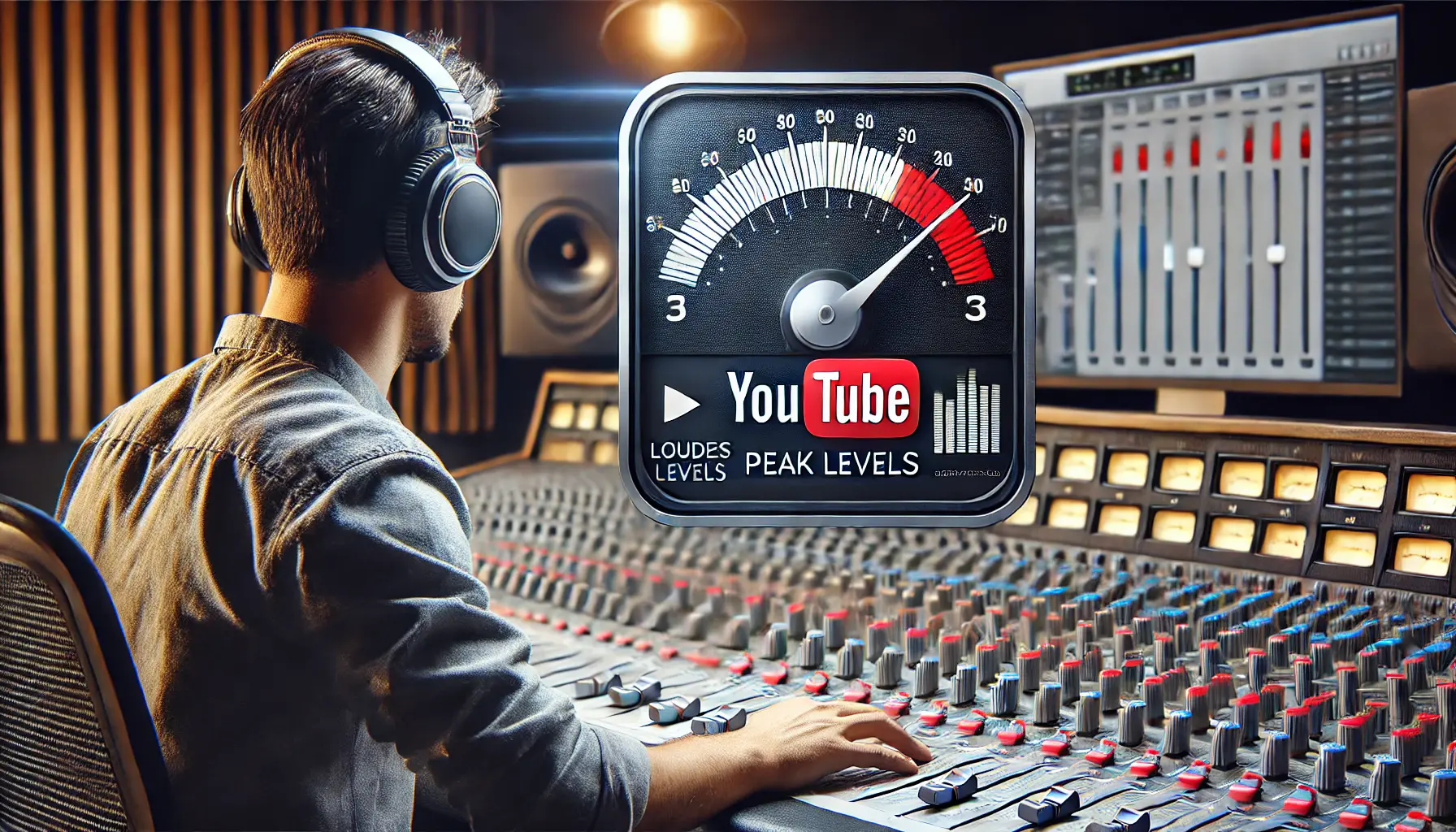
An image illustrating the process of ensuring audio levels meet YouTube’s loudness, peak, and consistency standards.
Ensuring Audio Levels Meet YouTube Standards
YouTube has specific guidelines for audio levels to maintain a positive viewing experience for users.
Adhering to these standards can prevent your ad from being flagged or rejected.
- Loudness Standards: Aim for a loudness level of -14 LUFS (Loudness Units Full Scale), as recommended by YouTube.
- Peak Levels: Keep peak audio levels below -1 dB to avoid distortion.
- Audio Consistency: Ensure consistent audio levels throughout the ad to avoid sudden volume changes.
Optimizing sound design for YouTube ads is not just about technical precision; it’s about creating an audio experience that complements your message and resonates with your audience.
In the next section, we’ll discuss how to create emotional impact with sound and music to deepen your connection with viewers.
Sound design enhances clarity and professional appeal, ensuring your message is heard loud and clear across all devices.
- Balance background music with voiceovers.
- Use sound effects strategically to complement visuals.
- Optimize audio for mobile and desktop audiences.

An image illustrating the emotional impact that sound and music can have in creating connections with the audience.
Creating Emotional Impact with Sound and Music
Emotions are a strong driver of decisions, and sound is one of the most effective tools to evoke those emotions.
Whether it’s a chirpy tune that lifts spirits or a nostalgic melody that pulls at heartstrings, the right music can create a deep emotional connection with your audience.
Here’s how to leverage sound and music to maximize emotional impact in your YouTube ads.
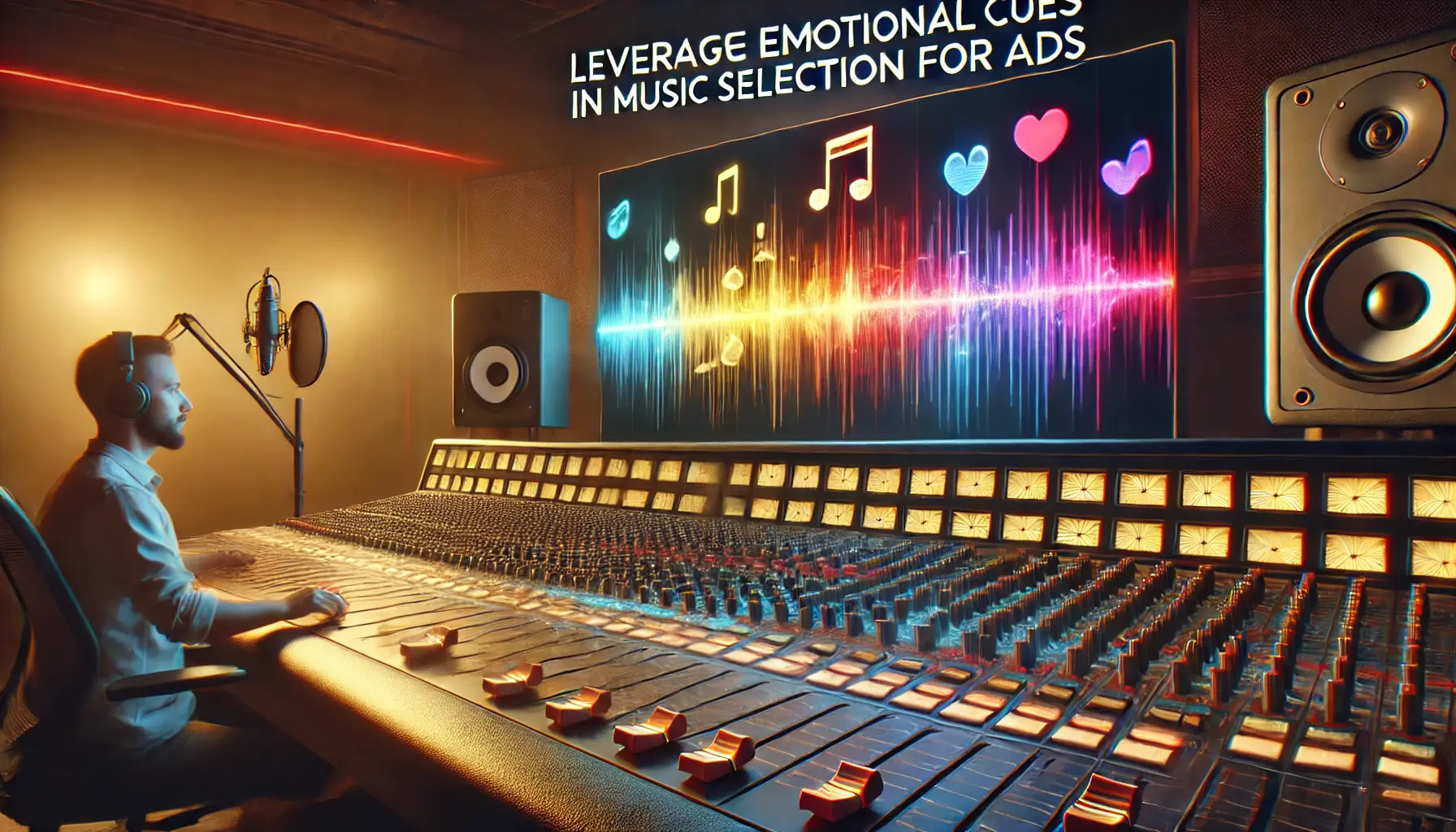
An image illustrating how emotional cues in music selection can evoke different emotional responses in ads.
Leveraging Emotional Cues in Music Selection
Music has the ability to influence how people feel and respond to your ad.
By understanding the emotional cues of different musical elements, you can align your ad’s message with the desired emotional response.
- Tempo: Upbeat tempos can energize viewers, while slower tempos can evoke feelings of calm or introspection.
- Melody: Simple and repetitive melodies are more likely to stick in the audience’s mind.
- Instrumentation: Acoustic instruments often feel warm and personal, while electronic sounds can add excitement and modernity.

An image illustrating the scientific connection between audio and consumer behavior, highlighting its emotional and psychological impact.
The Science Behind Audio and Consumer Behavior
Studies show that sound significantly influences consumer behavior.
Ads with emotionally touching music perform much better in recall and engagement.
Music not only enhances the narrative but also impacts how your audience perceives your brand.
- Memory Recall: Music associated with strong emotions is more likely to be remembered.
- Brand Perception: The right music can enhance the perceived value and relatability of your brand.
- Purchase Intent: Emotional engagement through sound can drive viewers to take action.
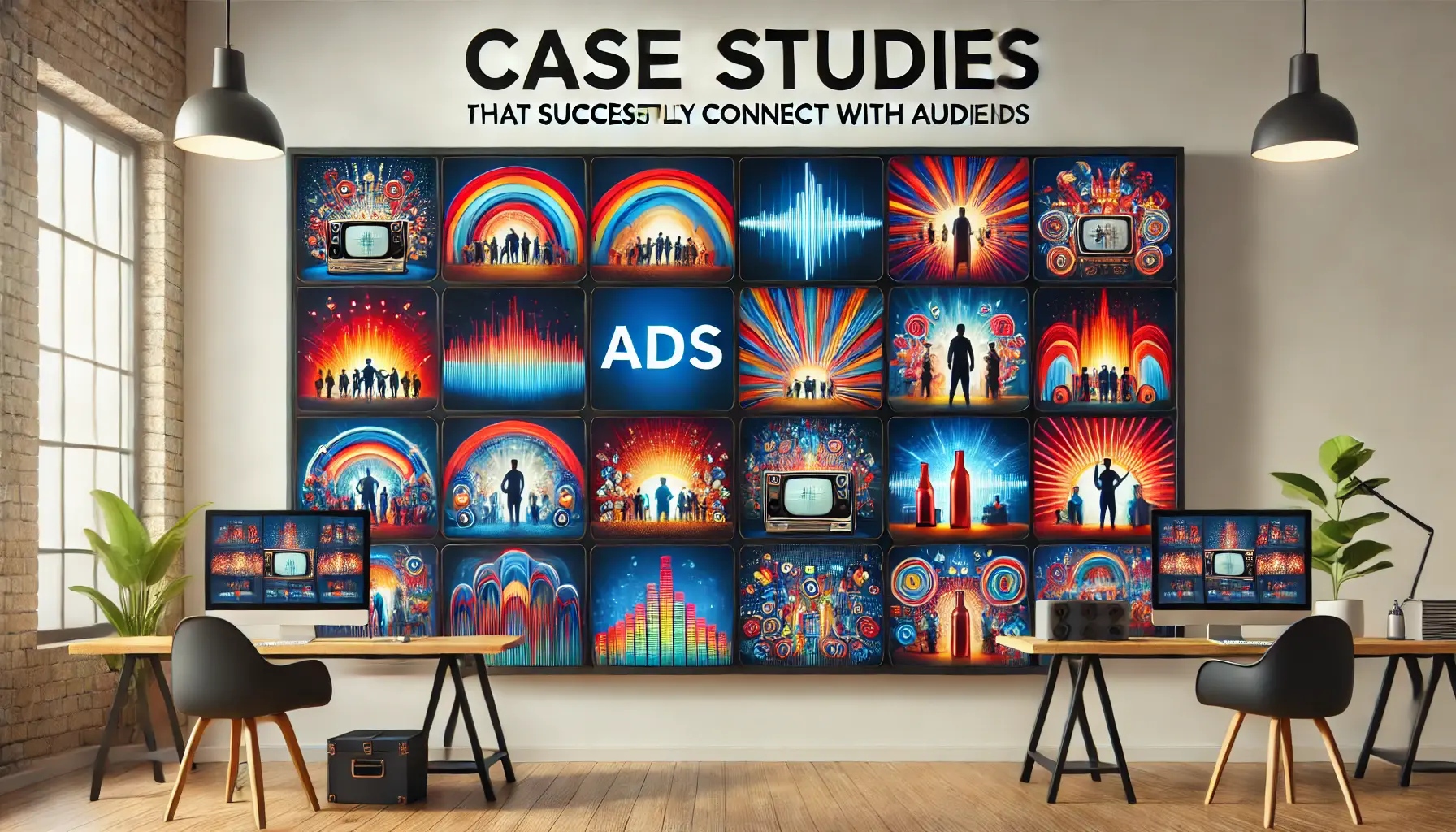
An image showcasing different ad scenes that connect with audiences through impactful sound design.
Case Studies: Ads That Connect Through Sound
Many successful YouTube ads have demonstrated the power of sound in creating an emotional connection.
By studying these examples, you can gain inspiration for your campaigns.
- Coca-Cola: Known for its upbeat and happy tunes that reflect its brand message of joy and togetherness.
- Apple: Often uses minimalist soundtracks that evoke inspiration and creativity.
- Spotify: Utilizes music that resonates with its audience’s personal experiences and playlists.
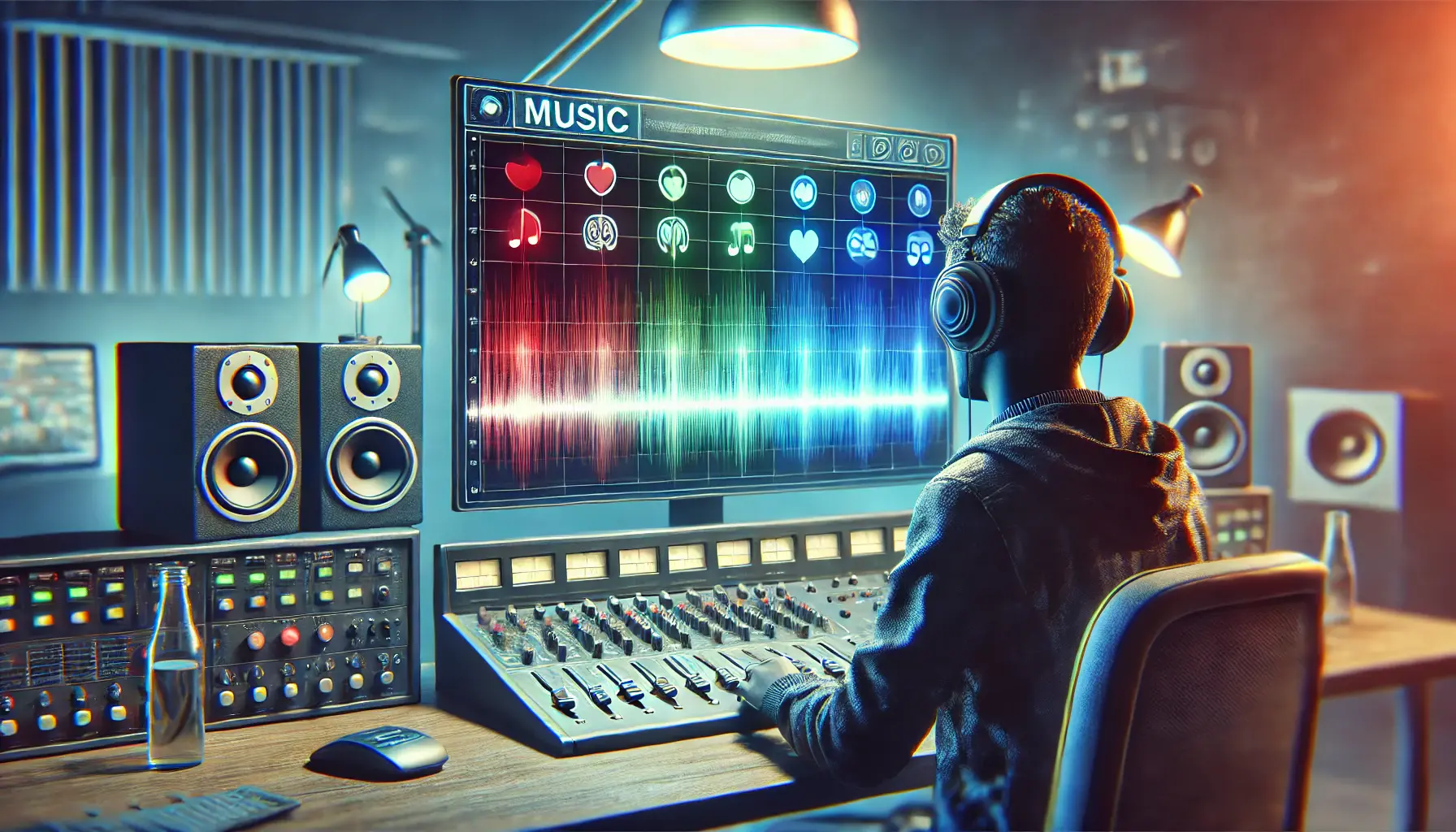
An image illustrating the testing process of music for emotional resonance in ads, highlighting different emotional cues.
Testing Music for Emotional Resonance
Not all music will have the same impact on your audience, so it’s important to test and iterate.
A/B testing different soundtracks can help you decide which one works best for your target demographic.
- Audience Feedback: Understand the emotional response through surveys and focus groups.
- Performance Metrics: Keep track of engagement rates, view-through rates, and conversions to estimate performance.
- Iterative Improvement: Develop or adjust your sound strategy based on analytics insights.
Using sound and music to create an emotional impact allows you to connect with your audience on a deeper level and make your ads truly memorable.
In the next section, we’ll explore how to measure the success of these sound strategies to continuously improve your campaigns.
Emotional resonance through music can deepen connections with your audience and make your ads more memorable.
- Align musical elements with the intended emotions.
- Study successful campaigns for inspiration.
- Test different soundtracks to gauge audience response.
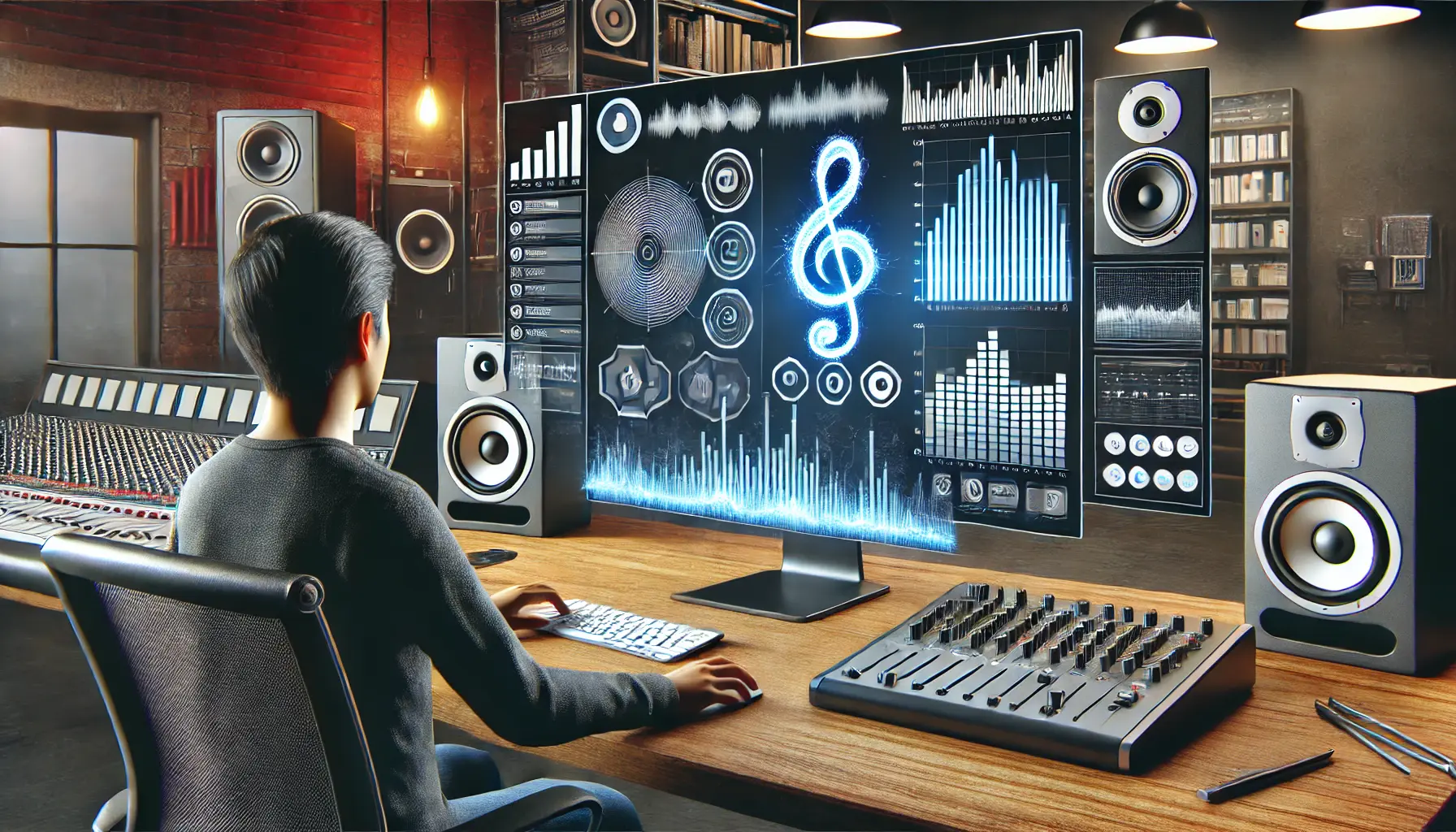
An image illustrating the measurement and analysis of the effectiveness of music and sound strategies in advertising.
Measuring the Success of Music and Sound Strategies
Measuring the effectiveness of your music and sound strategies in YouTube ads is essential to understand their impact and optimize future campaigns.
A well-implemented audio strategy can significantly enhance engagement, retention, and conversions.
Here’s how you can evaluate the success of your audio elements.
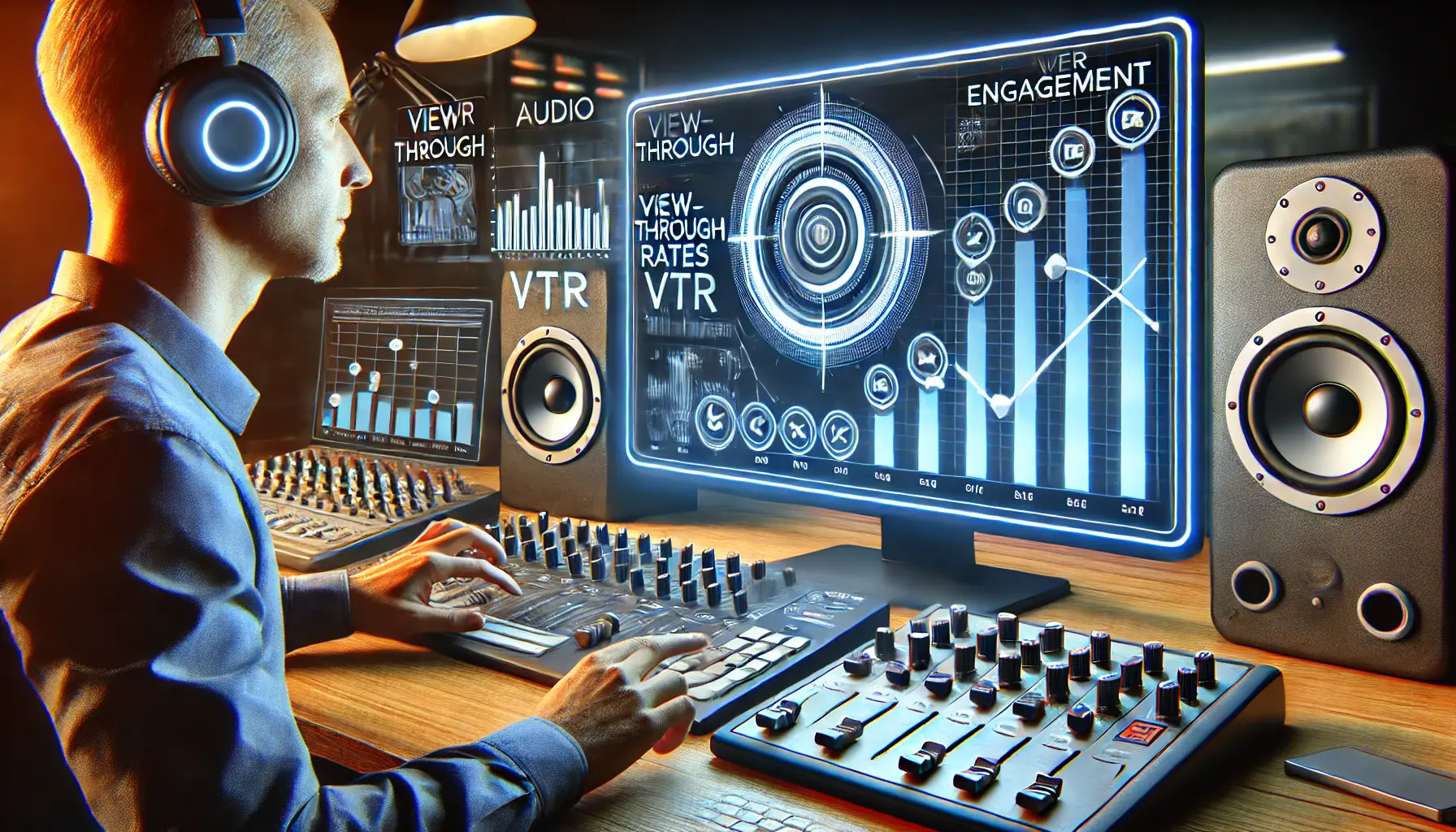
An image representing the analysis of viewer engagement using audio metrics like VTR and CTR.
Analyzing Viewer Engagement with Audio Metrics
Engagement metrics provide insights into how viewers interact with your ad and whether your music and sound choices are resonating with them.
Focus on these key indicators:
- View-Through Rate (VTR): A higher VTR suggests that your audio elements are retaining viewers’ attention.
- Click-Through Rate (CTR): Engaging music can lead to increased CTR by prompting viewers to take action.
- Likes, Shares, and Comments: Monitor social interactions to assess audience sentiment towards your ad.

An image illustrating how music influences ad retention rates by enhancing viewer engagement.
How Music Impacts Ad Retention Rates
Retention rates measure how long viewers watch your ad before skipping or exiting.
Music and sound play a pivotal role in maintaining their interest.
- Opening Seconds: Catchy audio hooks can capture attention within the first few seconds, reducing skip rates.
- Consistency: Well-balanced music and voiceovers help maintain engagement throughout the ad.
- Relevance: Music that aligns with the ad’s visuals and message keeps viewers connected.

An image representing the integration of high-performance audio strategies in digital campaigns, emphasizing metrics and engagement.
Case Study: High-Performance Audio-Driven Campaigns
Analyzing successful campaigns can provide valuable lessons for your audio strategy.
For instance:
- Netflix: Known for using dramatic soundtracks that align with their cinematic content, enhancing the emotional appeal of their ads.
- Nike: Combines energetic beats with inspirational messages, boosting viewer motivation and engagement.
- Google: Leverages uplifting and aspirational tunes to complement their innovative branding.

An image illustrating the use of A/B testing to compare and optimize different audio strategies in advertising.
Using A/B Testing to Optimize Audio Strategies
A/B testing is a powerful method to determine which audio elements work best for your audience.
Test your ad creative with various soundtracks or sound designs to determine what works best.
Here are key elements to test:
- Music Styles: Compare different genres to choose the right one that represents your brand and appeals to your target customers.
- Volume Levels: Test the background music levels to ensure the voiceover remains clear and impactful.
- Call-to-Action (CTA): Use audio cues to encourage viewers to take specific actions.
Measuring the success of your music and sound strategies is a continuous process.
By tracking metrics, analyzing audience behavior, and iterating based on insights, you can refine your YouTube ads for maximum impact.
These strategies will not only elevate your audio elements but also make a significant difference in achieving your overall marketing goals.
Evaluating audio strategies is essential for continuous improvement in ad performance.
- Track metrics like VTR, CTR, and retention rates.
- Analyze engagement to identify effective elements.
- Use A/B testing for iterative optimization.
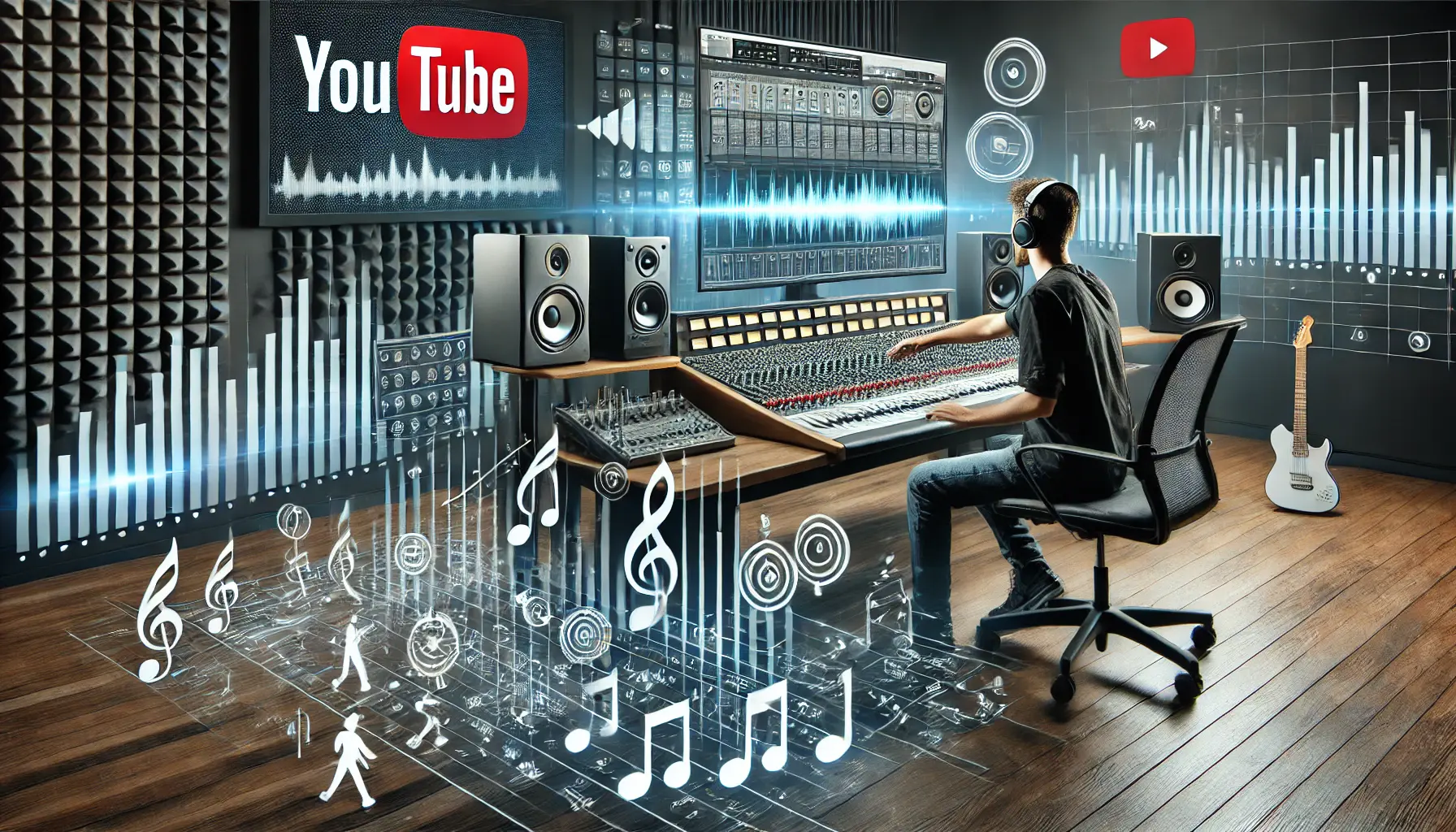
An image representing the mastery of music and sound strategies for creating high-quality YouTube ads.
How to Master Music and Sound Strategies for YouTube Ads
Music and sound are more than mere background elements in ads; they are powerful tools to boost engagement, evoke emotions, and leave a lasting impression.
These elements can help brands make their ads stand out in the highly competitive digital landscape.
Here’s a summary of the key points from the article.
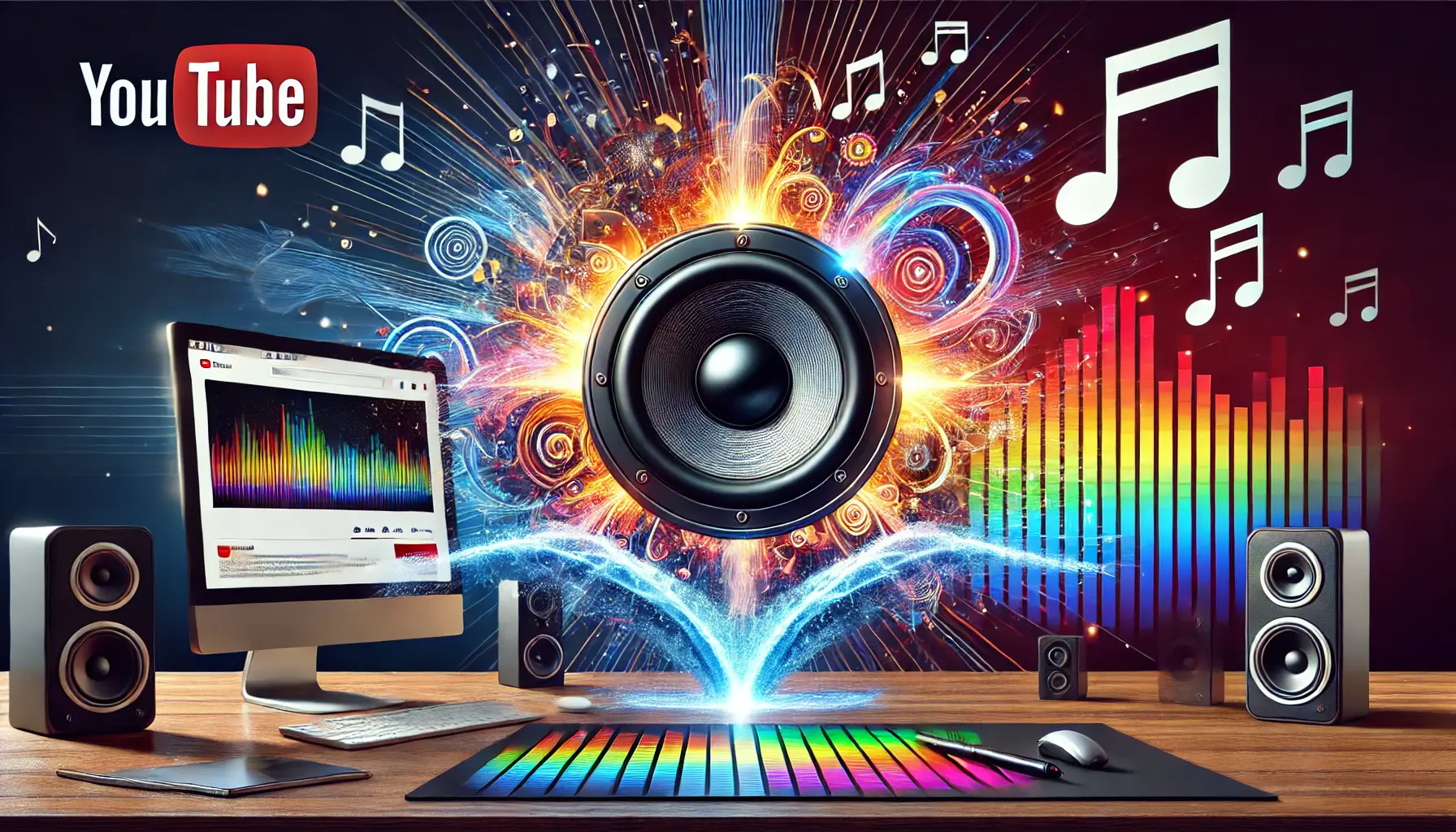
An image illustrating the significance of music and sound in making YouTube ads more engaging and emotionally impactful.
Why Music and Sound Matter in YouTube Ads
Audio elements are essential for capturing attention and enhancing the overall message of your ad.
Sound and music are instrumental in:
- Drawing viewers’ focus and keeping them engaged.
- Creating an emotional connection with your audience.
- Boosting brand recall through memorable audio cues.

An image representing the careful selection of the right music for an advertising campaign.
Choosing the Right Music for Your Campaign
Selecting music that aligns with your brand identity and ad objectives is critical.
Key considerations include:
- Reflecting your brand’s core values with appropriate music styles.
- Licensing music responsibly to avoid legal complications.
- Exploring royalty-free libraries for cost-effective solutions.
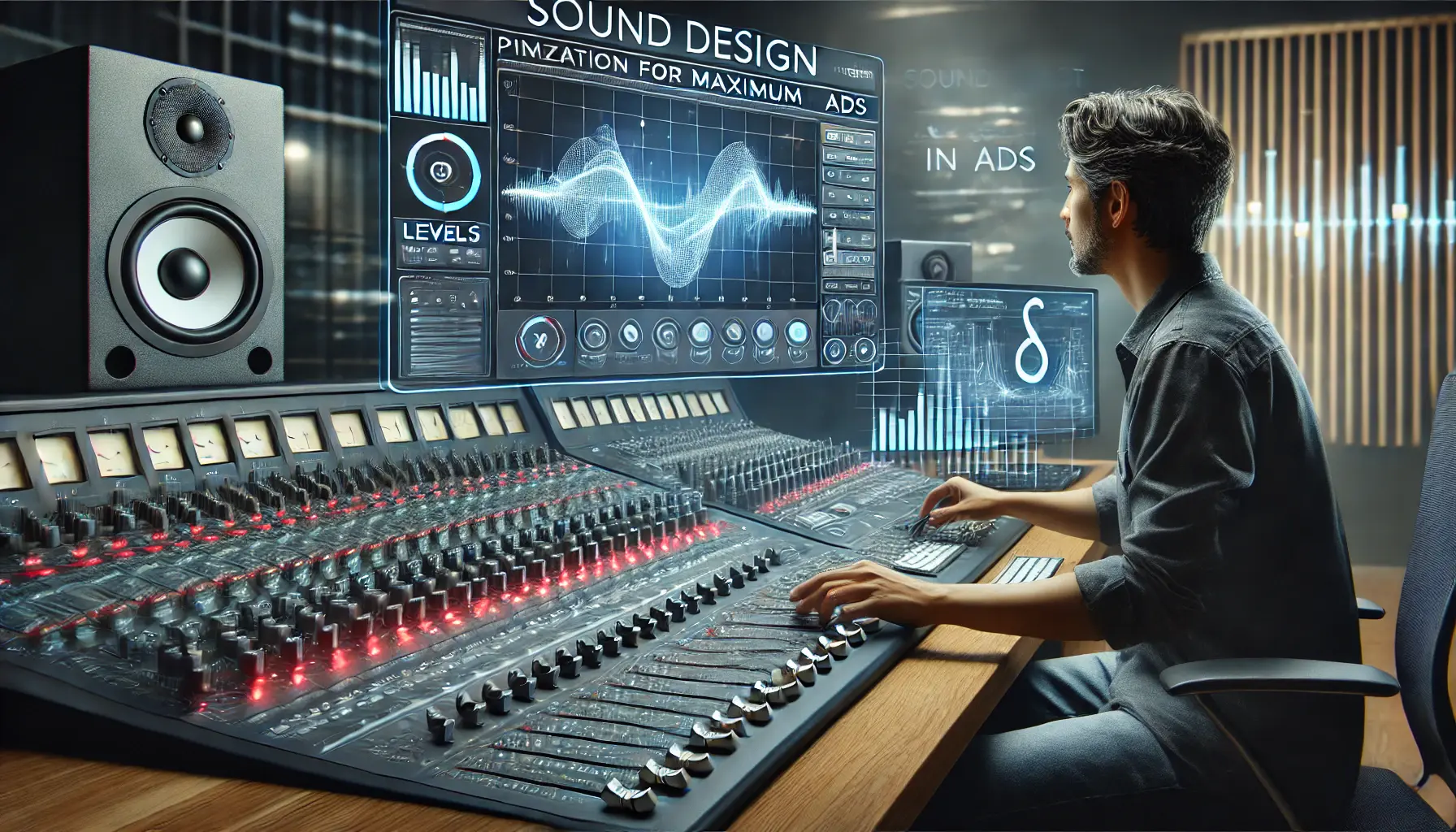
An image illustrating the process of optimizing sound design to achieve maximum impact for ads.
Optimizing Sound Design for Maximum Impact
Sound design ensures clarity and impact in your ads.
Effective sound design involves:
- Balancing background music and voiceovers for clear communication.
- Using sound effects to enhance storytelling without overwhelming the audience.
- Adapting audio for different devices to maintain quality across platforms.

An image illustrating the process of creating emotional resonance through sound and music.
Creating Emotional Resonance
Music and sound have the power to evoke emotions that influence consumer behavior.
To achieve this, focus on:
- Selecting music with emotional cues that align with your message.
- Studying successful campaigns to gain inspiration for your strategy.
- Testing music to ensure it resonates with your audience.

An image illustrating the process of evaluating the success of audio strategies through data analysis and performance metrics.
Measuring the Success of Your Audio Strategies
Evaluating your audio strategies is vital for continuous improvement.
Key metrics include:
- Parsing viewer engagement via VTR, CTR, and social interactions.
- Monitoring retention rates to gauge the efficiency of your audio hooks.
- Using A/B testing to refine your sound design and music selection.
Using music and sound strategies in your YouTube ads is both an art and a science.
By aligning audio with your brand, optimizing sound design, and measuring success, you can create ads that do more than just capture attention—they leave a lasting impression.
Let your ads amplify your brand’s message and speak volumes about the power of sound and music, driving your brand toward increased engagement and success in the digital marketing world.
Mastering music and sound strategies involves aligning audio with your brand, optimizing sound design, and measuring success to achieve long-lasting audience impact.
- Focus on creating emotional resonance.
- Ensure clarity and balance in sound design.
- Refine strategies based on analytics.
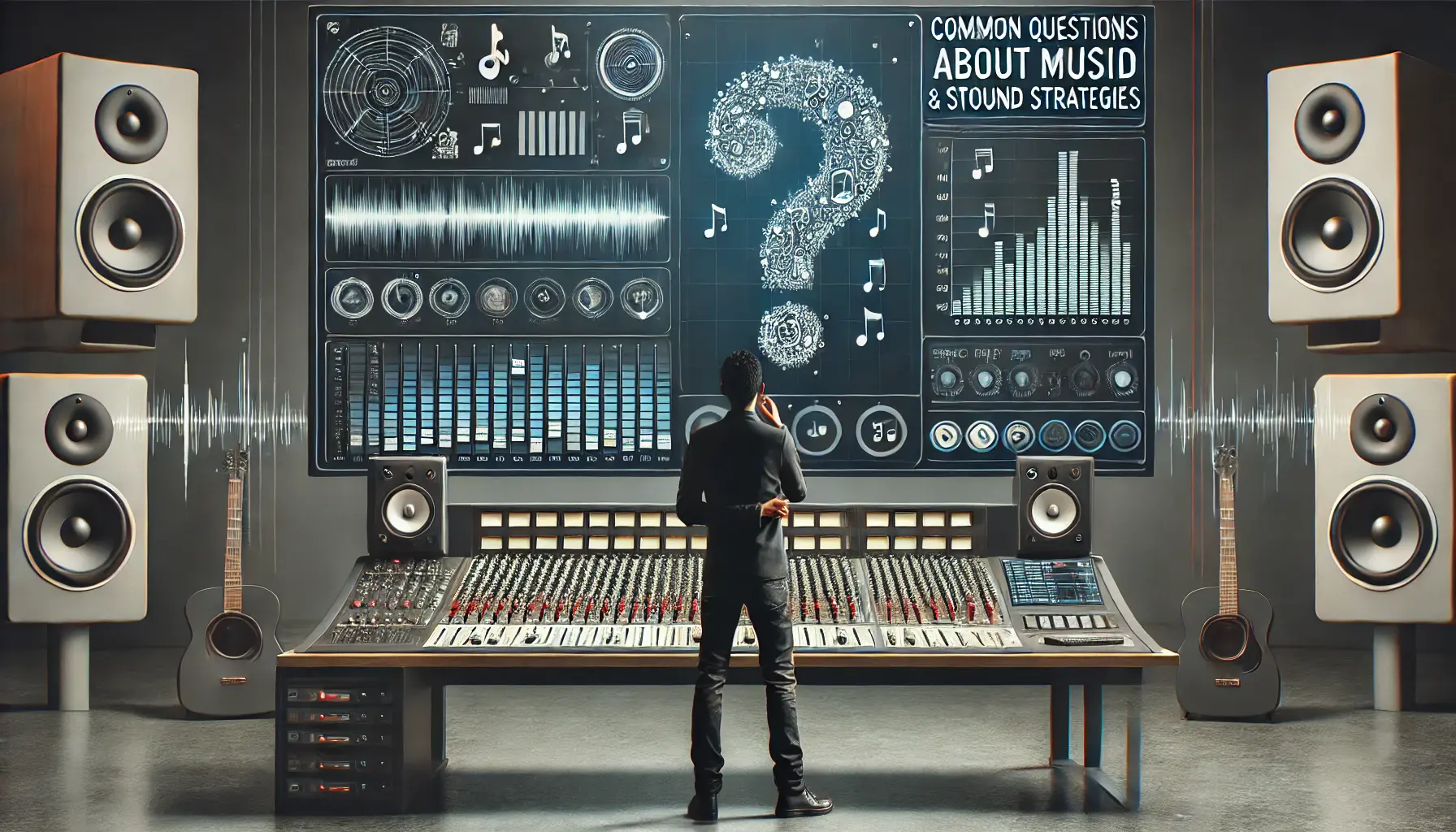
An image symbolizing the exploration of common questions regarding music and sound strategies in advertising.
Your campaigns can be managed by an agency specialized in Google Ads, check out our service page.
Common Questions About Music and Sound Strategies
Here are some of the most frequently asked questions about how to use music and sound effectively in YouTube advertising, along with brief explanations to help you deepen your understanding of this critical component of digital marketing.
Music helps capture attention, evoke emotions, and improve brand recall, making your ads more engaging and memorable to viewers.
Choose music that aligns with your brand identity, reflects your audience’s preferences, and complements the message of your ad campaign.
Ensure that the music is properly licensed for use in your ad.
Consider using royalty-free libraries or commissioning custom compositions to avoid legal issues.
Sound design ensures clarity, amplifies storytelling, and creates an immersive experience, making ads more impactful and engaging for the audience.
Track metrics like View-Through Rate (VTR), Click-Through Rate (CTR), and retention rates to evaluate the effectiveness of your music and sound strategies.
Yes, royalty-free music is an affordable option for high-quality tracks that ensures you avoid copyright issues in your campaigns.
Emotionally resonant music connects deeply with viewers, influencing their behavior and enhancing their perception of your brand.
